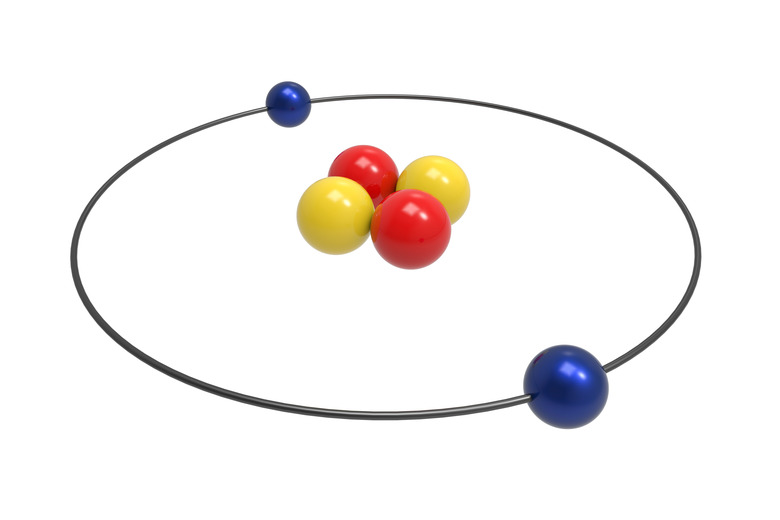How To Determine If The Bond Between Two Atoms Is Polar?
Let's say your 5-year-old cousin wants to play with a stuffed animal. Your 4-year-old cousin also wants to play with that stuffed animal. They both grab the stuffed animal and pull. Who wins? Well, it could be whoever is stronger and probably whoever wants the toy more!
You can think about chemical bonding in a similar manner. The key to determining if the bond between two atoms is polar has to do with the behavior of the electrons, which themselves are the key to chemical bonding. They are shared if both atoms want the electrons an equal amount, and they aren't shared if one atom wants the electrons more. How do you know which atom wants the electrons more?
Electronegativity and Atoms
Electronegativity and Atoms
Electronegativity is the ability of an atom to attract electrons in a chemical bond towards itself. Basically, it means how much an atom wants electrons.
Elements that have a high electronegativity have a greater tendency to attract electrons toward them than elements with lower electronegativity.
It is important to remember that electronegativity can only be measured in relation to the electronegativity of another element. There is no absolute scale for electronegativity.
Why do certain atoms want electrons more and others want them less? Remember that atoms want to have a full valence shell. This means that many atoms want to have eight electrons in the valence shell. This can happen with the help of ionization and/or bonding.
For this reason, the periodic table shows a trend in electronegativity. As you move across the periodic table from left to right, the electronegativity of the elements increases. As you move from bottom to top, the electronegativity also increases. It is important to note that the transition metals do not follow this rule.
The most electronegative elements are found in the top right hand of the period table: fluorine, oxygen, chlorine. The least electronegative elements are found in the lower left hand of the period table (the alkali and alkaline earth metals).
What Does Electronegativity Tell you About Bonds?
What Does Electronegativity Tell you About Bonds?
Two atoms that have very different electronegativities tend to form ionic bonds. In an ionic bond, one atom takes an electron from the other atom.
For example, sodium has an electronegativity of 0.9 while chlorine has an electronegativity of 3.0. Clearly, chlorine is much more electronegative than sodium. As a result, chlorine with take the one electron in sodium's valence shell and form an ionic bond to make NaCl.
In other words, the atom that is less electronegative will give up its electron to the more electronegative atom. Ionic bonds generally occur between a metallic and nonmetallic element.
On the other hand, when two atoms have similar electronegativity, they will form a covalent bond in which the atoms share the electrons. This bond can be polar if one atom has a higher electronegativity. Even though they share the electrons the atom with the higher electronegativity will end up shifting the electron cloud toward it. Basically, the more electronegative atom isn't very good at sharing!
Finally, only atoms of the same element bonded together can be in a truly pure covalent bond. Since the atoms have the same electronegativity, they will share the electrons equally.
So Which One is it? Ionic, Polar Covalent or Covalent?
So Which One is it? Ionic, Polar Covalent or Covalent?
While there is no hard and fast rule about the cutoff between ionic bonds and polar covalent bonds, there are some guidelines.
What kind of bond is it?
| Bond Type | Electronegativity Difference |
| pure covalent | <0.4 |
| polar covalent | between 0.4 and 1.8 |
| ionic | >1.8 |
You can use this table to predict what kind of bond certain compounds have.
**Example:** What kind of bond does KF contain?
Potassium has an electronegativity of 0.8 while fluorine has an electronegativity of 4.0 The difference is 3.2. This is well above 1.8 meaning that KF has an ionic bond.
**Another example:** What kind of bond does HCl contain?
Hydrogen has an electronegativity of 2.1 while chlorine has an electronegativity of 3.0. The difference between them is 0.9. This means that HCl has a polar covalent bond with chlorine hogging the electrons more than hydrogen does!
Cite This Article
MLA
Gupta, Riti. "How To Determine If The Bond Between Two Atoms Is Polar?" sciencing.com, https://www.sciencing.com/determine-between-two-atoms-polar-5872292/. 9 February 2020.
APA
Gupta, Riti. (2020, February 9). How To Determine If The Bond Between Two Atoms Is Polar?. sciencing.com. Retrieved from https://www.sciencing.com/determine-between-two-atoms-polar-5872292/
Chicago
Gupta, Riti. How To Determine If The Bond Between Two Atoms Is Polar? last modified August 30, 2022. https://www.sciencing.com/determine-between-two-atoms-polar-5872292/
